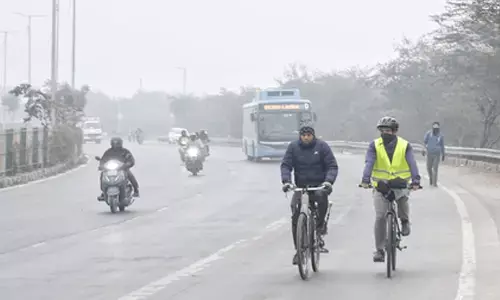Renewable Energy sector highest priority of government, tariff and infrastructure costs remain an issue

Amid a global focus on renewable sources as a way forward, the government and the industry appear unanimous on the need to expand the green energy capacity, but high tariffs and costly infrastructure came in the way during 2018 and the sector want these issues resolved in the new year
New Delhi: Amid a global focus on renewable sources as a way forward, the government and the industry appear unanimous on the need to expand the green energy capacity, but high tariffs and costly infrastructure came in the way during 2018 and the sector want these issues resolved in the new year.
For the government, endeavour will be to increase the share of green energy in 2019 to fight climate change, but experts feel it would require resolving issues related to tariffs, safeguard duty, clarity on GST and meeting a tall investment order of Rs 5.12 lakh crore to finally achieve 175 GW of clean power by 2022.
"Our endeavour remains to enhance the share of green power and be an effective partner in the fight against climate change so as to leave behind a healthy planet for future generations," Power and New & Renewable Energy Minister R K Singh told PTI.
The minister said the New and Renewable Energy sector has received highest priority in India for the government headed by Prime Minister Narendra Modi, who has been conferred with United Nations 'Champions of the Earth Award' this year for his work on conservation of environment, promotion of renewable energy, setting of International Solar Alliance and his efforts to fight climate change.
According to Ministry of New and Renewable Energy (MNRE), a cumulative renewbale energy capacity of 73.35 GW had been installed in the country till October 31, 2018, with 21.55 GW under various stages of installation and 25.21 GW in various stages of bidding.
This translates to more than 120 GW of renewable energy capacity, either installed or under installation or under bidding, and after introduction of competitive bidding, India discovered the lowest tariff of 2.43 per unit for wind energy and 2.44 per unit for solar energy.
The government has set a target for installing 175 GW of renewable energy capacity by 2022, which includes 100 GW from solar, 60 GW from wind, 10 GW from biomass and 5 GW from small hydro power.
To achieve the balance target of 101.65 GW, an investment of about Rs 5.12 lakh crore has been estimated.
Industry body Solar Power Developers Association said the year 2018 has been full of opportunities and challenges for the solar industry and the MNRE's efforts made the transition happen in capacity addition from MW scale to GW scale through ISTS (Inter State Transmission System) bids.
Not just central implementation agencies like the SECI (Solar Energy Corporation of India) and PSU power giant NTPC, states like Maharashtra and Gujarat have also adapted the ISTS model with good response.
Similarly, hybrid scheme formulated by the MNRE received positive feedback from the industry.
However, the ceiling on the tariffs restricted the industry participation, resulting in only partial subscription of 1050 MW out of 1200 MW (solar wind hybrid) tender capacity.
It took around six months to conclude bids with multiple extensions.
And despite multiple attempts, manufacturing-linked solar energy tenders did not receive any participation, except by Azure as sole bidder for 600 MW capacity out of 3000 MW (solar with manufacturing component) tender capacity.
The SPDA said the industry is always willing to participate in domestic manufacturing of solar modules with "incentive-based dedicated manufacturing scheme", which was formulated by the MNRE, but that is yet to receive a green signal from the Ministry of Finance.
On capping of tariff, the industry body said every state has its own challenges in terms of granting permits and clearances, land acquisition processes, evacuation possibilities, logistics and availability of work forces required during project execution.
Besides, the price of capital equipment and construction machinery keeps varying depending on the prevailing market conditions.
"It is not possible to leverage the market conditions and reflect the benefits into bid tariffs with upper cap fixed.
Every bid has its own unique features and must get advantage of market driven parameters," the SDPA said.
"It has been a long pending request from the industry to remove the tariff ceiling and let the market factors discover the best possible tariffs.
It would surely increase the participation and competitiveness for the betterment of the sector. We hope the MNRE will consider it in upcoming bids," it added.
In order to achieve the solar mission targets, MNRE has resolved many critical issues faced by the industry, such as custom classification of solar modules, time bound pass-through mechanism from GST/safeguard duties, time extension of projects faced delays due to state related issues like land, connectivity and temporarily disruption caused after GST, it said.
The SDPA hoped a clarification on the GST rates should come soon the Ministry of Finance, while it lauded the MNRE for its support in representing the issues relating to ambiguities on the GST rates.
According to industry players, a trajectory has been laid for next two years to achieve 60 GW capacity.
but one main concern relate to long delays in dealing with PPA (power purchase agreement)/contractual issues with the SECI or NTPC that affect the capacity addition targets.
The SDPA said an independent 'dispute resolution mechanism' must be established in order to resolve the issues amicably and in time bound manner.















